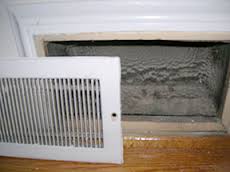
How Metal Detectors WorkHow Metal Detectors Work
A metal detector is a fascinating machine that people use to locate the position of any metallic material. Most people use them in searching for the hidden, misplaced or buried metallic treasure. Metal detectors can be used in our homes, schools and even industries. There are many metal detectors with different uses and strengths. It is very important to understand how they work. In this article, you will have a chance to learn everything you need to know about metal detectors. The knowledge on how the metal detectors work can help you to learn how to use it effectively. Keep reading the tips to know that it’s important to understand how they work.
The Transmitter
The very first thing you should know about metal detectors is the transmitter. In metal detectors, we have low-frequency transmitters and high-frequency transmitters. Inside a metal detector’s coil, antenna or loop is a coiled wire known as the transmit coil. An electronic current is passed through that coil to generate an electromagnetic field. Then the flow of current is directed in a reversed manner for about a 100 times in a second. The operating frequency of the transmitter is the number of times the current flow in a second. Therefore, the strength and workability of the metal detector are determined on how strong the transmitter is. The current usually flow from a clockwise to a counterclockwise direction and then back to clockwise. Current flowing in a given direction creates a magnetic field with a polarity like the one of a magnet which points to the ground where you think the metal is hidden or buried.
Receiver
Another coil of looped wires in the metal detector is the receive coil. The receiver coil is usually arranged in various methods for the current to flow through it. This, in turn, influences the transmitted field where it is cut off. Therefore, the magnetic fields that produced by these currents that flow inside the nearby metallic material make the currents to go to the receive coil. These currents are then amplified and regenerated by your metal detector without necessarily being swamped by these currents. The signal that results from the electromagnetic fields will appear delayed once they are compared to a transmitted signal. Usually, the delay tendency is due to the impendence of conductors to resist current changes. The phase shift occurs and conduction to great conductors like silver, gold, and copper.
 Discrimination
Discrimination
When the signal is received from a given metallic object, it exhibits its phase shift characteristics. For instance, a silver dime can cause a larger phase shift compared to an aluminum pull-tab. Therefore, the metal detector is set to sound off at the coin or dime and remain quiet when the pull-tab shows an identification of your target object on the display meter. The metal detector can discriminate by distinguishing various metal targets. A simple form of discrimination on the metal detector allows it to respond through an audio output when it is passed over …

 ackground of the companies offering these services. You should ask them how long they have been operating in this business. If the company is quite new, you should ask about the experience of its employees. It is advisable to ask for referrals from the past clients. This will help you find out if they were satisfied or not. You can also visit their websites and read more about them. Remember to check their customer testimonials and feedback.
ackground of the companies offering these services. You should ask them how long they have been operating in this business. If the company is quite new, you should ask about the experience of its employees. It is advisable to ask for referrals from the past clients. This will help you find out if they were satisfied or not. You can also visit their websites and read more about them. Remember to check their customer testimonials and feedback. ompanies need to inspect your air ducts for existing asbestos. This is because these materials need specialized cleaning procedures. Moreover, they should take measures that protect your family and pets from contamination. Your household belongings and carpets should be protected. Ensure your air duct cleaning company seals and insulates holes that are created during duct cleaning process.
ompanies need to inspect your air ducts for existing asbestos. This is because these materials need specialized cleaning procedures. Moreover, they should take measures that protect your family and pets from contamination. Your household belongings and carpets should be protected. Ensure your air duct cleaning company seals and insulates holes that are created during duct cleaning process.